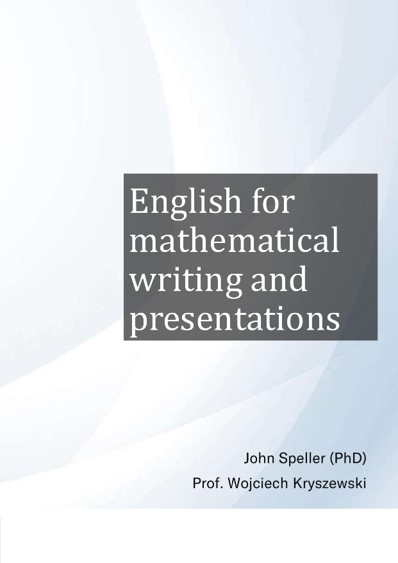Wpis na blogu utworzony przez dr John Speller
Overview
This course was designed to meet the language needs of non-native English-speaking mathematicians, who want to improve their ability to publish and present their mathematical research. It was developed in collaboration with a subject matter expert, who contributed the perspective of a practicing mathematician, as well as editorial advice. Thanks to my experience as a proofreader, I was also able to contribute subject knowledge.
The components include the coursebook and lesson slides, as well as online materials to enhance the learner experience. The project was completed using mostly Creative Commons and royalty-free sources, and will be published under a Creative Commons license.
Audience: Master’s and doctoral students
Responsibilities: Visual Design, eLearning Development, Content Curation, Instructional Design
Tools used: MS Word, Powerpoint, Moodle
Process
I began by interviewing the subject matter expert, with whom I would be teaching the course. We agreed on learning outcomes and prepared clear and measurable learning objectives, ensuring they aligned with the needs identified earlier.
I then conducted a literature survey and compared existing communication courses for mathematicians.
Based on the results, I designed a detailed course outline, adapted to the needs of non-native English speaking learners.
During the development phase, I drafted coursebook units, authored comprehensive lesson plans, and created PowerPoint presentations. To accommodate various learning styles, I included visual aids, audio recordings, and interactive online modules.
After completing the course materials, I moved on to the implementation phase. I shared the course on the university’s online learning platform, providing students with access to the materials. I also conducted in-person classes, where they were able to practice communication skills and receive feedback from their teachers and peers.
Throughout the course, I actively sought feedback from students to assess their learning experience and identify areas for improvement. Formative assessments were used to measure their progress, and the production of a full article and presentation proved their achievement of the learning outcomes. Based on the feedback received, I made revisions to the course materials to address any identified gaps or areas requiring enhancement.
Cooperation with SME | ADDIE | Rapid prototyping
Results
The course has received positive feedback from students. Students appreciated the engaging content, interactive learning experiences, and practical assignments. The coursebook will shortly be sent for review prior to publication.
